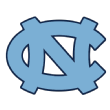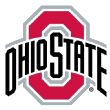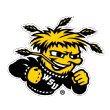Although the 2020 College World Series was canceled in March because of the coronavirus pandemic, ESPN still wanted to celebrate the baseball postseason that would have been.
Who is the best player of all time at every position in college baseball? We're here to find out.
Voting is complete for catcher, shortstop, second base, first base, third base, relief pitcher, left field, right field, center field, two-way player left-handed pitcher and right-handed pitcher.
The final reveal show will air at 8 p.m. ET on ESPNU and the ESPN App on Tues., June 30.
Players with an asterisk (*) are members of the College Baseball Hall of Fame.
Left-handed pitcher

*Jim Abbott (Michigan)
Abbott won the Golden Spikes Award in 1987 when he also became the only baseball player to win the James E. Sullivan Award for outstanding amateur athlete. The 1988 Big Ten Player of the Year still ranks in the top 10 in Michigan history in wins (26, fifth) and ERA (3.04, seventh).

*Eddie Bane (Arizona State)
Bane is one of seven pitchers in Division I history to strike out at least 500 batters and is the only pitcher in Arizona State history to throw a perfect game. He posted a 0.99 ERA in 1972 -- lowest in Sun Devils history -- in a season in which he had a streak of 43 straight scoreless innings, tied for fourth-longest in D-I history.

*Floyd Bannister (Arizona State)
Bannister was a two-time All-American after leading Division I in strikeouts in 1975 (217) and in 1976 (213). He threw 186 innings in 1976, the most in Division I history, finishing with 19 wins (tied for third-most in Division I history) and a 1.45 ERA, the lowest by an Arizona State pitcher in the aluminum bat era, throwing a complete game in 17 of 25 appearances.

Andrew Miller (North Carolina)
Miller was Baseball America's Player of the Year in 2006 after going 13-2 with a school-record 133 strikeouts and leading North Carolina to the national championship game. He finished his career with a program-record 325 strikeouts and is one of 10 Tar Heels with at least 25 career victories.

David Price (Vanderbilt)
Price starred in the 2007 awards circuit, claiming the Golden Spikes Award, the Dick Howser Trophy, the Roger Clemens Award and sweeping the national Player of the Year awards. He led the SEC with a 2.63 ERA and 194 strikeouts that season, the second-highest total in conference history.

*Greg Swindell (Texas)
Swindell was a three-time first team All-American and the Collegiate Baseball Player of the Year in 1986, and earned All-CWS honors after helping Texas to the championship game in 1984 and 1985. His 14 career shutouts are the most in Division I history and he's the only pitcher in Texas history with 500 career strikeouts, also ranking third on the program's all-time list with 43 victories.

*Frank Viola (St. John's)
Viola is the only pitcher in St. John's history to record two 10-win seasons, finishing his career with a 26-2 record and 1.67 ERA, fourth-lowest in program history. After leading St. John's to the 1980 College World Series, where he picked up a complete-game victory over Arizona in the opener, he earned first-team All-American honors in 1981.

Barry Zito (USC)
Zito pitched all over Southern California during his collegiate career, with one season each at UC Santa Barbara, Los Angeles Pierce College and USC. He was a first team freshman All-American with the Gauchos in 1997, finishing with 123 strikeouts (second-most in program history). He was even better at USC in 1999, finishing as a first team All-American after striking out 146 hitters. Despite just one season there, he has three of the five 16-strikeout games in Trojans history.
Right-handed pitcher

*Steve Arlin (Ohio State)
Arlin was a two-time first team All-American and the Most Outstanding Player at the 1966 College World Series after leading the Buckeyes to their lone national championship. He had 165 strikeouts in 1965 -- a mark that still stands as the Big Ten record -- and struck out a CWS-record 20 hitters in a game against Washington State that season.

Roger Clemens (Texas)
Clemens led the team in strikeouts during both his seasons at Texas and he's one of five Longhorns to strike out 150 batters in a season. He threw a complete game in the championship game as Texas beat Alabama to win the 1983 College World Series.

*Kirk Dressendorfer (Texas)
Dressendorfer was a three-time first team All-American; in 1989, he went the distance in 15 of 23 appearances and was tied for the Division I lead with 18 wins. He went 45-8 in three seasons in Austin, the second-most wins in program history, and his 462 strikeouts are third-most in Longhorns history.

*Don Heinkel (Wichita State)
Heinkel has the most wins in Division I history, finishing his career with a 51-11 record in 70 appearances. He helped lead Wichita State to its first College World Series appearance in 1982, but was the losing pitcher in the championship game against Miami.

*Burt Hooton (Texas)
Hooton was a three-time first team All-American at Texas and member of the CWS Legends team. His name is all over the Longhorns' record book, where he finished with career records in ERA (1.14) and strikeouts per nine innings (11.9) and a single-game record 19 strikeouts.

*Ben McDonald (LSU)
McDonald won the Golden Spikes Award -- and all the other national Player of the Year honors -- after breaking the SEC record with 202 strikeouts in 1989. He threw 43⅔ consecutive scoreless innings that season, the third-longest streak in Division I history, and became the first baseball player to have his jersey retired at LSU.

Mark Prior (USC)
Prior claimed the Pac-10 Triple Crown in 2001, leading the conference with 15 wins, 202 strikeouts and a 1.69 ERA on his way to becoming USC's only Golden Spikes Award winner. The Pac-10 Pitcher of the Year was the first in the conference to strike out 200 batters in a season, a list that only Trevor Bauer (UCLA) has joined since.

Stephen Strasburg (San Diego State)
Strasburg was a two-time first team All-American and won the Golden Spikes Award in 2009 after leading Division I with a 1.32 ERA and 195 strikeouts. His 16.1 strikeouts per nine innings that season were third-most in Division I history and came a season after he recorded a 23-strikeout game, tying for the most in a game since aluminum bats were introduced in 1974.
